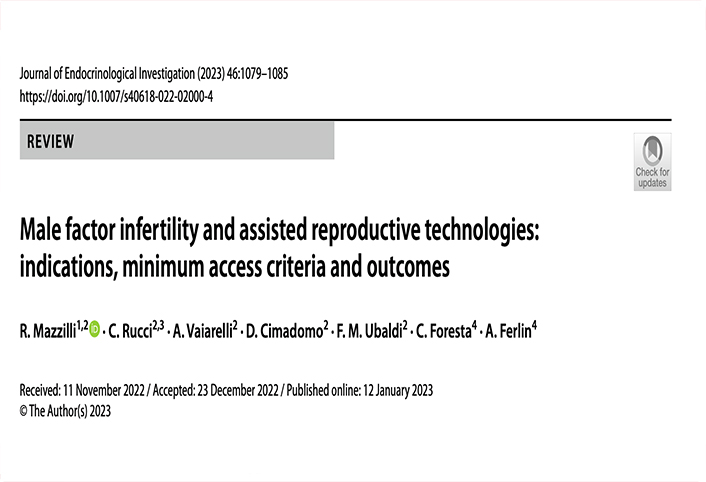
R. Mazzilli, C. Rucci, A. Vaiarelli, D. Cimadomo, F. M. Ubaldi, C. Foresta, A. Ferlin
Journal of Endocrinological Investigation (2023) 46:1079–1085 https://doi.org/10.1007/s40618-022-02000-4 – Received: 11 November 2022 / Accepted: 23 December 2022 / Published online: 12 January 2023
Abstract
Background Infertility, which is defined as the inability to conceive after at least 12 months of regular unprotected sexual intercourses, affects about 15–20% of couples worldwide and a male factor is involved in about half of the cases. The devel- opment of assisted reproductive technology (ART) made it possible to conceive also to individuals affected from severe oligospermia or azoospermia. However, the impact of the male factor on embryo development, implantation, prevalence of chromosomal abnormalities, genetic and epigenetic alterations, and clinical and obstetric outcomes is still controversial. Purpose This narrative review examines the indications, minimum access criteria, and outcomes by individual ART tech- nique in relation to the male factor.
Keywords Assisted reproductive technology (ART) · Severe male factor · Azoospermia · Oligozoospermia · ICSI–IVF